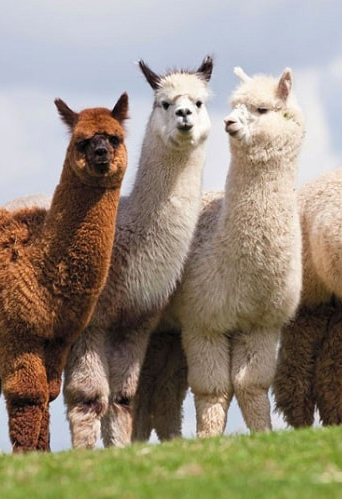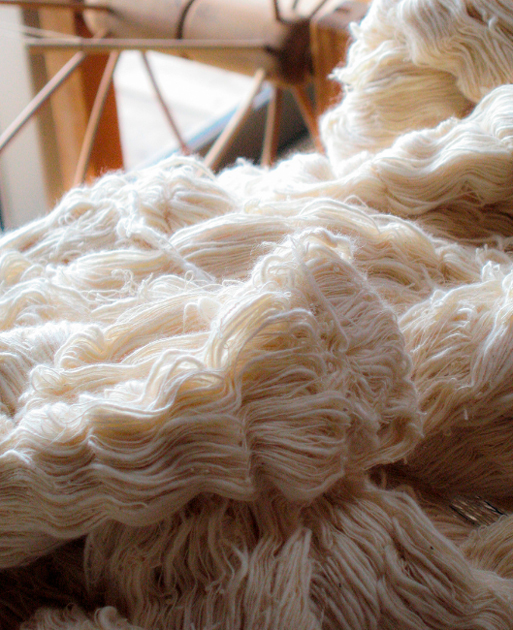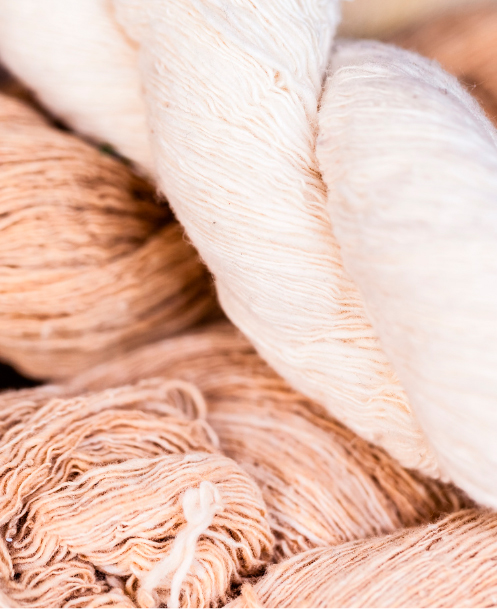Natural Fibers
Baby Alpaca, Pima Cotton, Viscose Rayon
Baby alpaca is a 100% natural luxury fiber that possesses certain features. It is hypoallergenic and very lightweight. It adapts to the body’s temperature and will keep you warm, but yet it is dry-fit and water-repellant
Peruvian Pima cotton is the finest and longest fiber in the world. It has a special shine and is soft to the touch. Despite being a long, fine fiber, Pima cotton is stronger than virtually all other cottons, so more durable garments can be made.
Viscose rayon is a previously solubilized and subsequently regenerated cellulose fiber. It is a very versatile fiber and has the same properties in terms of wearing comfort as other natural fibres, being able to imitate the feel of silk, wool, cotton or linen.


“Alpaca wool is appreciated for its elasticity and resistance. It is also quite light. It is thermal in nature, which means it maintains the body’s natural temperature.”

Baby Alpaca
Baby alpaca is a 100%-natural luxury fiber that possesses certain features. It is hypoallergenic and very lightweight. It adapts to the body’s temperature and will keep you warm, but yet it is dry-fit and water-repellant. It is a highly resistant yarn that is nearly impossible to burn.
Baby alpaca wool comes from the first shearing of an alpaca. It is the most valuable and appreciated of all alpaca yarn.
Alpaca wool is a light, high-quality and lofty wool that is very soft and beautiful.It has nothing to envy of cashmere, which has been on the decline since the 90’s.
Cashmere is goat wool. It is delicate, soft, very fine, thin and light.It is generally imported from India, China, Pakistan and Mongolia. The vicuña and the alpaca are two animals in the Camelid family that inhabit the heights of the Andes in Peru, Bolivia and Chile.
They are found at an altitude of more than 4,500 meters above sea level and were domesticated by the Incas, who raised them like livestock. Of the two, the vicuña produces wool with better properties, but it is also a more fragile animal and it is an endangered species, so it is protected. Therefore, both the vicuña and its wool can be utilized on a very small scale.
More alpaca wool is produced and is available and there are currently many varieties, the most important being Suri and Huancaya. Wool of different colors and thicknesses can be obtained.
Properties of alpaca wool
The most appreciated variety of alpaca wool is known as baby alpaca and it is made from the first shearing of the animal.
This yarn is characterized by being much thinner and finer than the wool made from subsequent shearing. It is important to clarify that no animal is sacrificed to produce this wool. Alpaca wool is appreciated because of its elasticity and resistance. It is also quite light, which makes it easy to carry.It is thermal in nature, meaning it maintains the body’s natural temperature. Another recognized property is its resistance to fire unless it is exposed directly.
Alpaca wool does not accumulate dust and repels water. It is difficult to get dirty as it has a thin natural layer of lanolin that makes it waterproof. The scents of perfumes and the body do not permeate the garment. All these properties make it a very durable thread. Its elegance and finesse make any product made with it a true jewel and a luxury in the world market.

“Despite being a long, fine fiber, Pima cotton is stronger than virtually all other cottons, so more durable garments can be made.”

Pima Cotton
Gossypium barbadense, also known by the name of its two most famous varieties, Pima cotton and Tangüis cotton, is a perennial tropical plant that blossoms yellow flowers and produces black seeds. It belongs to the extra-long fiber cotton group, the same as the Menufi and Giza 68 from Egypt and Sak from Sudan.
The oldest vestiges of its use are found in the desert in the north of Chile, dated at around the 36th century B.C. and there is evidence of its cultivation since the 25th century B.C. in Huaca Prieta (Department of La Libertad, Peru).
This cotton was woven universally throughout South America and the West Indies, where it was introduced by Christopher Columbus. The cotton was grown on slave plantations in the West Indies.
The combination of seeds, land and microclimate have made the Peruvian Pima cotton the finest and longest fiber in the world. When processed correctly, it has a special shine and is unbetterably soft to the touch.
Despite being a long, fine fiber, Pima cotton is also more resistant than virtually all other cottons, so more durable garments can be made. It is 38.10 to 41.27 mm long, has a Pressley resistance of 92.5 to 100; a fineness (Micronaire) of 3.3 to 4.0, and a creamy white color. This cotton is used to sew garments for the big- name brands such as Armani Exchange, Abercrombie, LaCoste and WIZZ.

“The texture of the viscose is fine and soft, it is very pleasant to the touch. The fiber is highly absorbent, making the fabric cool and breathable. Does not accumulate static electricity. These features give it a great feeling of comfort.”
Viscose Rayon
Viscose is a previously solubilized and subsequently regenerated cellulose fiber. It is a very versatile fiber and has the same properties in terms of wearing comfort as other natural fibres, being able to imitate the feel of silk, wool, cotton or linen. The fibers can easily be dyed in other colors. Viscose fabrics are soft, light, fresh, comfortable and highly absorbent, allowing perspiration. Therefore, they are ideal for hot and humid climates.
The tissue
Viscose has an excellent spin. Its fabrics can imitate the touch of silk, linen, cotton or wool. Like silk or cotton, viscose is extracted from nature and has the same wearing properties in terms of comfort.
The fabric with a matt appearance, such as cotton, is called viscose; the one with a shiny appearance, like silk, is called rayon.


Characteristics of viscose
Of all the fibers, viscose is the one with the most moisture and the physiology most similar to human skin.
Its texture is fine and soft, it is very pleasant to the touch. The fiber is highly absorbent, making the fabric cool and breathable. Does not accumulate static electricity. These characteristics give it a great feeling of comfort.
Little discoloration (especially black and dark tones). It stains well, so saturated colors and a silky shine are obtained. Offers good abrasion resistance.
It has a lot of weight, the loose garments have a very aesthetic drape and movement.


